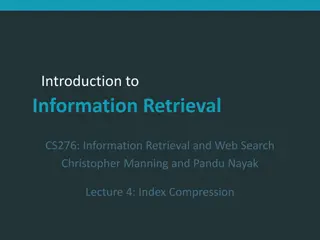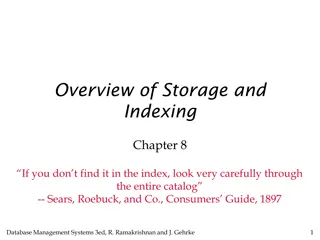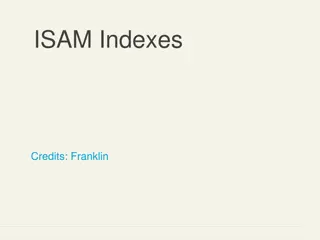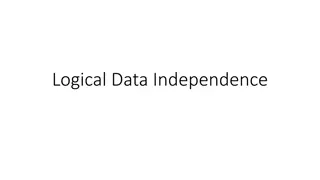
Understanding Indexes in Oracle Database
Learn about indexes in Oracle Database - what they are, how they are created automatically or manually, guidelines for index creation, and when to create or not create an index to optimize database performance.
Download Presentation

Please find below an Image/Link to download the presentation.
The content on the website is provided AS IS for your information and personal use only. It may not be sold, licensed, or shared on other websites without obtaining consent from the author. If you encounter any issues during the download, it is possible that the publisher has removed the file from their server.
You are allowed to download the files provided on this website for personal or commercial use, subject to the condition that they are used lawfully. All files are the property of their respective owners.
The content on the website is provided AS IS for your information and personal use only. It may not be sold, licensed, or shared on other websites without obtaining consent from the author.
E N D
Presentation Transcript
Chapter 4 Indexes
Indexes Object Description Table Basic unit of storage; composed of rows View Logically represents subsets of data from one or more tables Sequence Generates numeric values Index Improves the performance of some queries Synonym Gives alternative names to objects
Indexes An index: Is a schema object Can be used by the Oracle server to speed up the retrieval of rows by using a pointer If you do not have an index on the column, then a full table scan occurs. Can reduce disk input/output (I/O) by using a rapid path access method to locate data quickly Is independent of the table that it indexes This means that they can be created or dropped at any time, and have no effect on the base tables or other indexes. Is used and maintained automatically by the Oracle server When you drop a table, the corresponding indexes are also dropped.
How Are Indexes Created? Automatically: A unique index is created automatically when you define a PRIMARYKEY or UNIQUE constraint in a table definition. Manually: Users can create nonunique indexes on columns to speed up access to the rows. You can manually create a unique index, but it is recommended that you create a unique constraint, which implicitly creates a unique index.
Creating an Index Create an index on one or more columns: CREATE [UNIQUE] INDEX indexName ON table (column[, column]...); Specify UNIQUE to indicate that the value of the column (or columns) upon which the index is based must be unique. Alternatively, you can define UNIQUE integrity constraints on the desired columns Improve the speed of query access to the LAST_NAME column in the EMPLOYEES table: CREATE INDEX emp_last_name_idx ON employees(last_name);
Index Creation Guidelines Create an index when: A column contains a wide range of values A column contains a large number of null values One or more columns are frequently used together in a WHERE clause or a join condition The table is large and most queries are expected to retrieve less than 2% to 4% of the rows in the table Do not create an index when: The columns are not often used as a condition in the query The table is small or most queries are expected to retrieve more than 2% to 4% of the rows in the table The table is updated frequently The indexed columns are referenced as part of an expression
More Is Not Always Better Having more indexes on a table does not produce faster queries. Each DML operation that is committed on a table with indexes means that the indexes must be updated. The more indexes that you have associated with a table, the more effort the Oracle server must make to update all the indexes after a DML operation.
Removing an Index Remove an index from the data dictionary by using the DROPINDEX command: DROP INDEX indexName; Remove the emp_last_name_idx index DROP INDEX emp_last_name_idx; To drop an index, you must be the owner of the index or have the DROPANYINDEX privilege. You cannot modify indexes. To change an index, you must drop it and then re-create it.






















